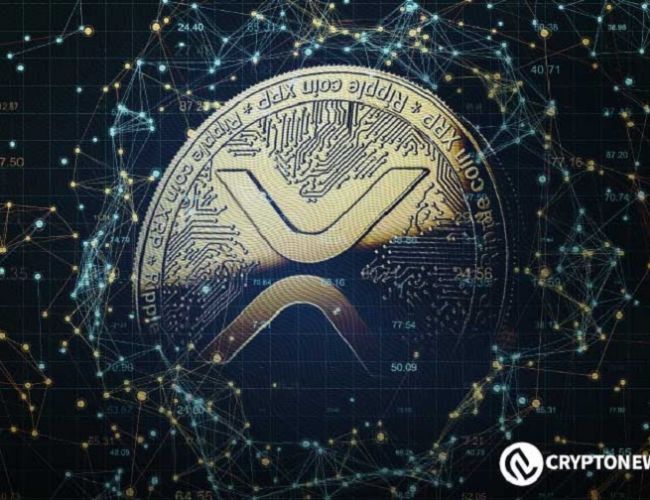- Lagarde sees global payment unity as vital for smoother and more efficient money transfers.
- Ripple’s XRP enables fast and affordable solutions for seamless overseas transfers.
- Legal shifts may shape Ripple’s role in future international finance.
Christine Lagarde, former director of the International Monetary Fund , called for interoperability among payment systems to address the growing complexity of cross-border remittances. Lagarde emphasized that integrating systems worldwide could improve efficiency and reduce costs for international transactions. Her view aligns with blockchain-based platforms like Ripple, which aim to streamline global financial transactions by enhancing payment connectivity across borders.
Ripple and XRP: Transforming Frontier Deals
The firm’s model offers an alternative to traditional systems like SWIFT by processing orders nearly instantly, allowing financial businesses to bypass the lengthy processes common in mainstream banking. RippleNet, its enterprise blockchain, utilizes the coin for periodic liquidity, which helps clients avoid pre-funded accounts. This innovation has attracted the attention of the European Union as it seeks more efficient interconnected service options.
Christine Lagarde, former #IMF director, stresses the need for interoperability among payment systems to tackle cross-border remittance challenges
Well, the EU is already working with #Ripple, and XRP is a cross-border remittance protocol that bridges global payment systems pic.twitter.com/a5JJty0Ya3
— Black Swan Capitalist (@VersanAljarrah) November 3, 2024
Ripple’s unique consensus protocol, the Ripple Protocol Consensus Algorithm , verifies transfers within three to five seconds. XRP can handle up to 1,500 transactions per second, which supports the rapid and cost-effective international payments financial institutions seek.
Decentralized Security Features Set Ripple Apart
Ripple’s structure differs from traditional cryptocurrencies due to its unique security measures and transaction process. Unlike Bitcoin, which relies on mining, Ripple created a fixed supply of 100 billion XRP tokens. This supply management is maintained with a system that releases a controlled amount each month. Ripple’s validators, which are spread across over 150 independent global servers, verify transactions, adding an additional layer of security.
This collaborative system, along with a decentralized network, allows Ripple to provide reliable and secure transaction validation that appeals to financial entities needing stability and security for overseas transfers.
Adoption of Ripple, Legal Issues, and Ideas for the Future
Ripple’s success in inexpensive deals has led to adoption by large organizations such as Santander and MoneyGram, which seek better international transfer alternatives The SEC has filed a complaint against Ripple, claiming XRP functions as an unauthorized security, which could impact the startup’s operations if the ruling settles the contentions.

